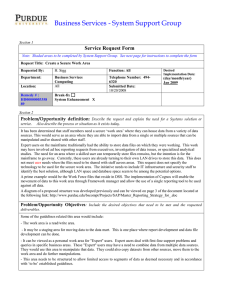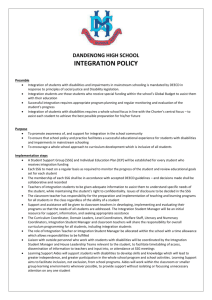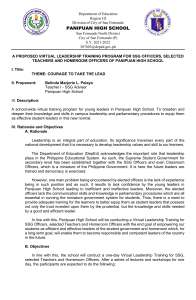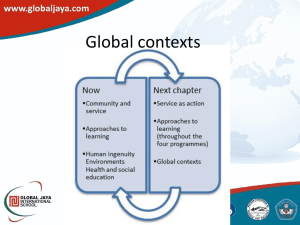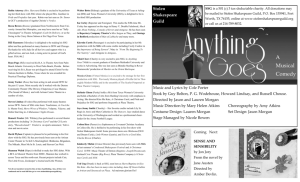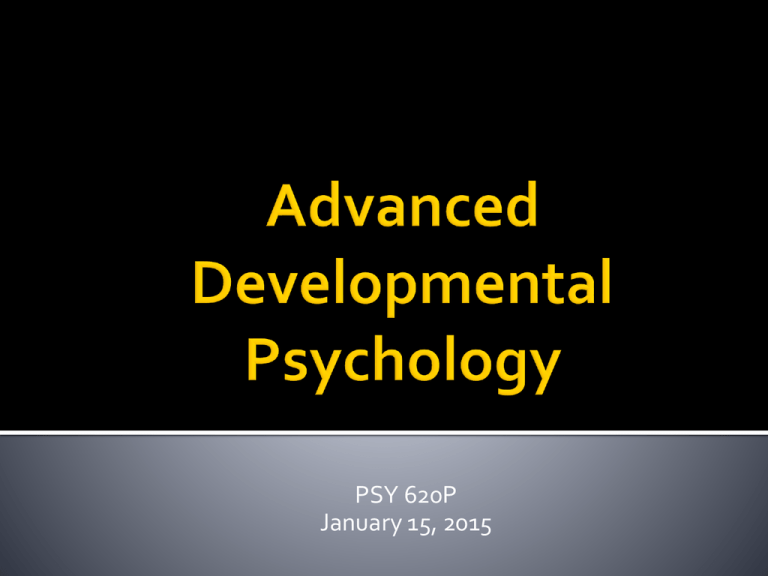
PSY 620P
January 15, 2015
January 22 – Culture in Development (cont).
Lansford, J. E., Chang, L., Dodge, K. A., Malone, P. S., Oburu, P., Palmerus, K.,
Bacchini, D., Pastorelli, C., Bombi, A. S., Zelli, A., Tapanya, S., Chaudhary, N.,
Deater- Deckard, K., Manke, B., & Quinn, N. (2005). Physical discipline and
children’s adjustment: Cultural normativeness as a moderator. Child
Development, 76, 1234. Jaime1
Chen, X., Chen, H., Li, D., & Wang, L. (2009). Early childhood behavioral inhibition
and social and school adjustment in Chinese children: A 5-year longitudinal study.
Child Development, 80, 1692-1704. Sarah1
Chen, X. (2012). Culture, peer interaction, and socioemotional development.
Child Development Perspectives. Caroline1
Bulotsky‐Shearer, R. J., Manz, P. H., Mendez, J. L., McWayne, C. M., Sekino, Y., &
Fantuzzo, J. W. (2012). Peer play interactions and readiness to learn: A protective
influence for African American preschool children from low‐income households.
Child Development Perspectives, 6(3), 225-231. doi: 10.1111/j.17508606.2011.00221.x Liz1
Focus on:
Multiple, mutual, continuous interaction of all
components of developing system
Emergence of new forms of behavior
Development as an open system
▪ Self-organizing with relative plasticity
Multiple levels of organization
Fused, embedded, nested
Development can be seen across all units of time
ms years
Development is adaptive and organized
Not just random change
Limits on possible outcomes, self-organization
Contexts are not fully independent
▪ Parenting is directly associated with the type of crowd adolescents
choose to affiliate with (Brown et al., 1993)
Effects of contexts on individual can be altered by
other contexts within the system
▪ Maladaptive adolescent crowd affiliation (vs. adaptive or
neutral) increased adverse effects of poor parenting and
diminished effects of positive parenting (Brown & Huang, 1995)
Effects of contexts on individual can be altered by
other contexts within the system
High levels of support from school personnel decreased levels of
distress among young adolescents with low levels of parental support
(but didn’t make a difference for kids with high levels of parental
support) (Dubois et al., 1992)
▪ Restrictive and controlling parenting is adaptive in
dangerous neighborhoods (e.g., Baldwin et al., 1990)
Social Contexts are Themselves Dynamic
▪ Effects of poverty on development change depending
on timing and duration
▪ Greatest effects on child if
(a) family in poverty for multiple years vs. shorter
amounts of time, and
(b) poverty experienced early in life vs. adolescence
(Brooks-Gunn & Duncan, 1997)
Dynamic Systems Theory – Applications
Focus on change, emergence of new forms, self-
organization
▪ Static System xt = f (a,b,c….)
vs.
▪ Dynamic System xt = f (xt-1,a,b,c….)
Dominant behaviors as attractors
▪ Arousal + negative emotional valence?
Dynamic Systems Theory – Applications
▪ State Space Grid Analysis
▪ 2-dimensional grids reflecting co-occurrence of 2 or more
variables
Strange Situation examples
see Howe & Lewis, 2005; Martin et al., 2005 (and
entire Developmental Review, 25 special section)
▪ State Space Grid
analysis of dyadic
interaction
▪ e.g., “Child 2 may have
been goading the
seemingly affable Child 1
through negative
behavior.
▪ Eventually, Child 1
responds in kind and the
interaction ends in
mutually high negativity,
indicating a conflict has
ensued.”
▪ True?
C. L. Martin et al. / Developmental Review 25 (2005) , pp. 307-308
Same sex peer proclivities
Other sex peer proclivities
How do these dyadic emotional dynamics differ?
▪ State Space Grid
Analysis
What features attract
the target child in
these 3 hypothetical
plots of their
successive interaction
partners?
Fig. 5. Examples of
SSG using focal
observations.
(A) Focal SSG for
boys: Session 1 only.
(B) Focal SSG for
girls: Session 1 only
Fig. 6. Examples of
SSG using focal
observations.
(A) Focal SSG for
same-sex playing
children.
(B) Focal SSG for
other-sex playing
children
20 YEARS OF DYNAMIC
SYSTEMS THEORY
AUTHORS: SPENCER, PERONE, & BUSS, 2012
CASEY BURROWS, 1/16/14
DYNAMIC SYSTEMS THEORY
• Emphasis on “how” of development
• Change occurs within complex systems that interact over
time to contribute to produce change in behavior
• Unit of analysis: organism within a given context
• Systems are self-organizing
• Behavior as emergent
• Rejection of dichotomies
• Nature vs. nurture
• Qualitative vs. quantitative change
REMAINING CHALLENGES
• Formally connecting units of analysis
• Integrating time scales
• Empirical methods
Real time Developmental time
Smile
(sleep/drowsy)
Attentive Brow
(awake)
Smile
(awake)
Messinger,, et al., 2002;
Dondi, et al., 2007

